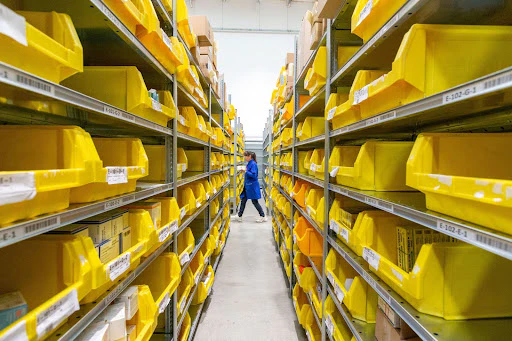IT Asset Tracking for BYOD: Security & Privacy Strategies
 Mara Quintanilla
Mara Quintanilla
As organizations adopt flexible work policies and remote working becomes the norm, implementing IT asset tracking in BYOD (Bring Your Own Device) environments has become increasingly crucial.
BYOD environments allow employees to use their personal devices, such as smartphones, laptops, and tablets, for work-related tasks. This flexibility offers countless benefits, including increased productivity, employee satisfaction, and cost savings. However, with this newfound freedom comes the crucial need for effective asset management strategies.
Why is asset tracking essential in BYOD environments? Picture this scenario: your company has a distributed workforce, with employees scattered across different locations, working on various devices. Without a comprehensive asset management system in place, chaos ensues. The challenges become all too real, from a logistical nightmare of tracking countless devices to potential data breaches and rising costs.
Implementing asset tracking for BYOD policies is not merely a choice; it's necessary for companies navigating the evolving landscape of distributed workforces. By having a clear view and control over your devices, you can build a solid foundation for your operations. Let's explore why embracing asset management for BYOD environments is imperative.
Steps to implementing IT asset tracking in BYOD environments
Deploying an IT asset tracking system in a Bring Your Own Device (BYOD) environment can be a complex undertaking that requires a well-defined and structured approach. Like the tallest skyscrapers need a strong foundation, a carefully crafted structure is essential for efficiently tracking devices.
Organizations can achieve this by meticulously establishing a solid framework through a series of strategic steps. By doing so, they can lay the groundwork for a robust and reliable asset-tracking system that meets their unique needs and requirements. Let’s break down the basic steps for implementing IT asset tracking in BYOD environments.
Develop a BYOD policy
The first step towards implementing IT asset management solutions is developing a comprehensive BYOD policy. This should outline the types of devices allowed, security protocols, and employee responsibilities when using personal devices for work purposes.
Determine which devices will be tracked
To effectively track mobile devices, you must determine which ones will be included in your asset management system. Consider factors such as operating systems and device compatibility with your organization's software.
Select an asset tracking tool
- Mobile Device Management (MDM): An MDM solution can help you monitor multiple devices across various platforms while ensuring data security and compliance with enterprise mobility policies.
- Asset Management Software: A dedicated tool for managing physical assets like laptops or smartphones can provide more granular control over inventory levels and usage patterns.
- Barcode Scanning Apps: If you're searching for a straightforward way to monitor individual items without investing significantly in specific hardware or software, consider using barcode scanning apps on workers' phones as part of your overall plan.
Educate employees on the tracking process
Once you've chosen a tracking solution, you must educate your employees about how the system works and their role in maintaining accurate records. This can help minimize confusion and ensure everyone is on board with your BYOD policies.
Monitor and maintain tracking data
Implementing IT asset tracking is an ongoing process that requires continuous monitoring and maintenance. Regularly review tracking data to identify trends, potential vulnerabilities, and opportunities for improvement. By staying vigilant and proactive, you can continuously optimize your asset management strategy and stay ahead of the curve in the ever-evolving BYOD landscape.
Best practices for IT asset tracking in BYOD environments
In a Bring Your Own Device (BYOD) environment, it is essential to implement best practices for effective IT asset tracking. These practices help ensure the security and efficiency of your organization's mobile assets while maintaining employee satisfaction. Here are some recommended best practices to truly harness the power of asset management:
Clear communication channels
For organizations to effectively handle and keep track of numerous devices, it's crucial to establish open lines of communication between employees and their IT teams. This involves developing clear guidelines for reporting lost or stolen devices, updating personal device information in the mobile device management system, and offering assistance when problems arise.
Implement strict security protocols
Security is everything in a world where we use our personal devices for work. It's essential to be aware of the potential vulnerabilities and risks that come with BYOD environments. Strict security protocols are a must to keep your sensitive corporate data safe. This not only protects your company but also ensures compliance with industry regulations. Key security measures to consider include:
- Password protection: Require strong passwords on all BYOD devices to prevent unauthorized access.
- Data encryption: Ensure that sensitive data stored on personal devices is encrypted.
- Virus protection: Install antivirus software on all BYOD devices to protect against malware attacks.
- Patch management: Regularly update operating systems and applications with security patches as they become available.
Regularly update tracking software
Keeping track of your organization's mobile assets can be challenging, but having the right IT asset tracking software makes all the difference. Choose an asset management solution that can automatically detect new devices connected to the network, track changes in hardware configurations, monitor installed software versions, and generate detailed reports about each device's status.
By staying on top of these updates, you'll have peace of mind knowing that you're aware of any potential risks associated with outdated tech or unapproved apps being used on personal devices.
Periodically review and assess the tracking process
Monitoring your organization's asset tracking process is always a good idea. By doing so, you can pinpoint any areas that may need improvement. This may include updating BYOD policies, implementing new security measures, or investing in more advanced asset management solutions. By continually refining your approach to IT asset tracking in a BYOD environment, you can ensure that both company data and employee privacy are protected.
Challenges and considerations for IT asset tracking in BYOD environments
Keeping track of IT assets can be quite a challenge, especially when employees bring their own devices to work. From privacy concerns to legal issues and technology costs, these hurdles can be tough to overcome. That being said, organizations must understand these challenges to establish a successful asset management system.
Privacy concerns
In a world where personal data protection is becoming increasingly important, employees may feel uneasy about having their personal devices, which often contain sensitive information, tracked by their employers. To address this issue, companies should establish clear boundaries between work-related and personal data on mobile devices through containerization or other security measures.
Legal implications
Different countries have varying regulations regarding employee privacy rights when it comes to monitoring company-owned assets. When implementing BYOD policies that involve mobile device management (MDM), businesses need to understand local laws and ensure compliance with them. This might include obtaining employee consent before initiating any form of tracking or monitoring.
Cost of implementing tracking technology
The financial investment required to implement an effective system can be significant, depending on the chosen solution. Companies must consider initial setup costs and ongoing maintenance expenses associated with managing multiple devices across different operating systems when evaluating potential solutions.
Tackling these challenges head-on:
- Create transparent communication channels between employers and employees regarding BYOD policies and asset tracking.
- Implement strict security protocols to protect personal data on mobile devices.
- Stay informed about local regulations and ensure compliance with employee privacy laws.
- Evaluate the cost-effectiveness of different asset management solutions before making a decision.
Achieving a smooth and efficient IT asset tracking process can be challenging in environments where employees bring their own devices. However, with the right approach, organizations can overcome these hurdles and establish a culture of trust and collaboration with their workforce.
About our IT asset tracking platform
Looking after IT assets, whether they belong to the company or your team members, can be overwhelming. But it's a crucial responsibility. Luckily, it doesn't have to be as challenging as it seems. With careful planning, you can ensure that your devices are tracked, security compliance is met, and security measures are implemented.
At GroWrk, we offer an end-to-end asset tracking platform that provides real-time visibility into all your IT devices regardless of where your team members are located. We can enroll your devices in your preferred MDM solution, ship them out to employees in over 150+ countries, and recover equipment when employees leave your organization.
By combining our solution with the expert tips we've shared in this post, your team will be ready to tackle the hurdles that come with adopting BYOD environments. Request a demo today to uncover how we can support your company.






